My Solo Hocking Hills Trip!
Unfortunately, missing the class field trip to Deep Woods resulted in a solo, but refreshing trip to Hocking Hills! I visited Old Man’s Cave and Conkle’s Hollow. On my own, I was only able to identify one tree that grows in acidic sandstone substrates. I identified one invasive species, four species of ferns, and three species that we’ve discussed in class before. I will also point out some plants that are new to me!
First up, the sandstone-loving Eastern Hemlock (Tsuga canadensis)! Hemlock is restricted to cool, moist environments like valleys with sandstone bedrock, but can also range north of the glacial boundary.
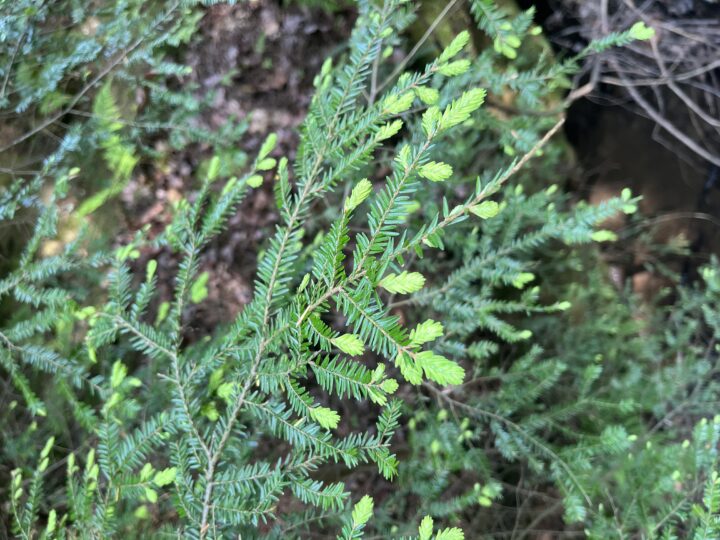
Next, invasive Garlic Mustard (Alliaria petiolata). We identified this at Battelle Darby, but I wanted to point it out again to highlight its invasiveness! As I noted on the Battelle Darby page, its fruits are siliques. The plant only grows seeds in its second year, as it grows in rosettes during its first year. When the leaves are crushed, a garlic scent is released. Similar to Amur Honeysuckle, Garlic Mustard grows earlier than native plants in the spring which causes competition for sunlight and nutrients. A tip for getting rid of Garlic Mustard is to uproot the plant before they set seed to prevent the spread of seeds!
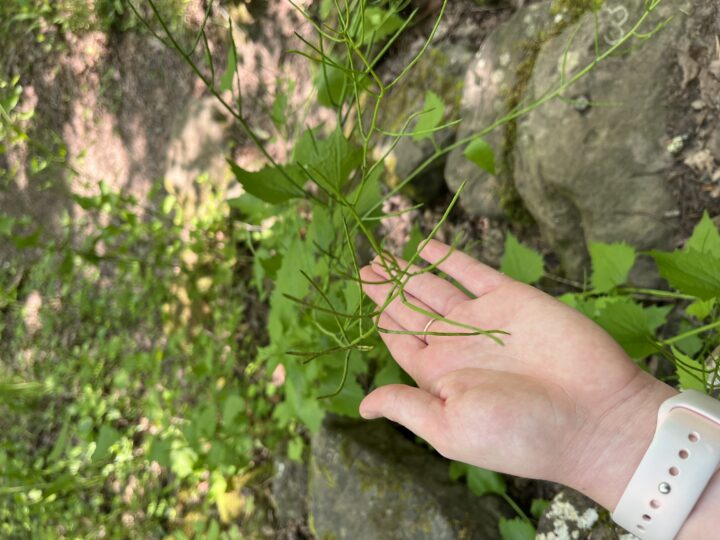
Now for ferns! The first fern I identified was a Sensitive Fern (Onoclea sensibilis). Sensitive ferns are holodimorphic as they have long, fertile fronds on the top of the plant and small, sterile fronds at the base. Their frond dissection type is bipinnatifid. Though I did not see an indusium, I suspect that a Sensitive Fern has a peltate indusium.
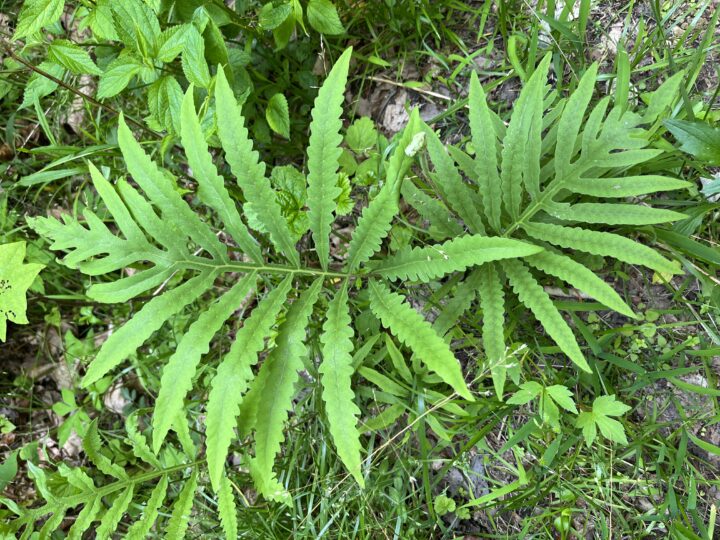
The second fern is a Lady Fern (Athyrium Filix-femina). Lady Ferns are monomorphic with spores growing on the underside of leaves. Their frond dissection type is pinnate-pinnatfid as the fern is divided into leaflets, and the leaflets are lobed. The indusium type is reniform because they are kidney-shaped.

The third fern is a Christmas Fern (Polystichum acrostichoides). Christmas Ferns are heteromorphic because the ends of the fronds have have reduced leaflets where the sori are located. Their frond dissection type is pinnate because the frond is divided into separate leaflets. The indusium type is peltate because it is circular and attached to a central stalk.
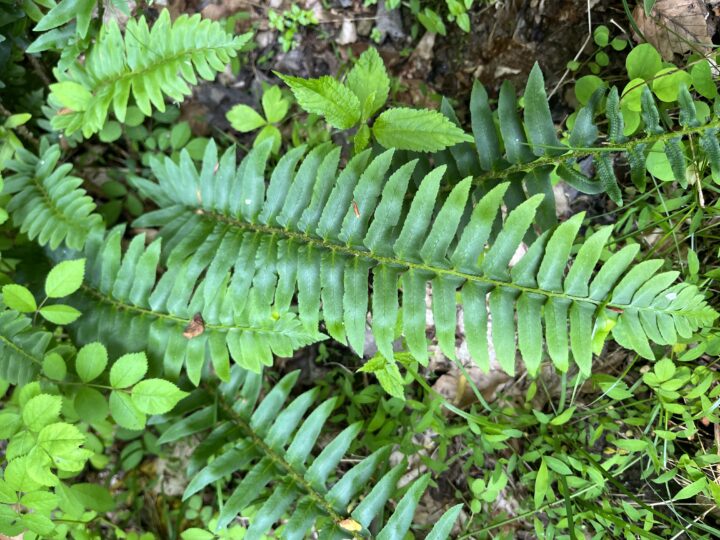
The fourth fern is a Spinulose Woodfern (Dryopteris spinulosa). Spinulose Woodferns are monomorphic with spores growing on the underside of leaves. Their front dissection type is tripinnate because the leaflets are thrice-compound. The indusium type is reniform because they are kidney-shaped.
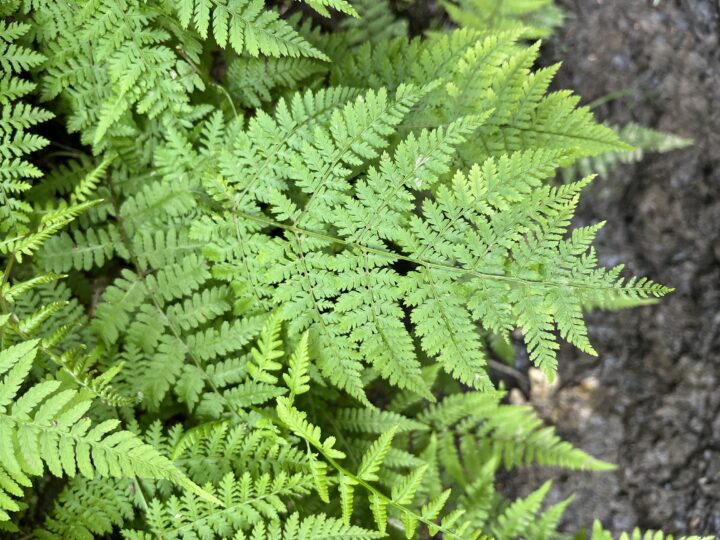
A notable plant that we discussed in class that I found was Jack-in-the-pulpit (Arisaema triphyllum)! I was excited to find this guy since we discussed in depth the idea of a hood arching over the spadix. The hood is dark beneath, almost black. Jack-in-the-pulpits oftentimes only have one leaf. It produces fruit that is a dense cluster of scarlet berries. It is known to grow in moist woods, which makes sense for Hocking Hills!
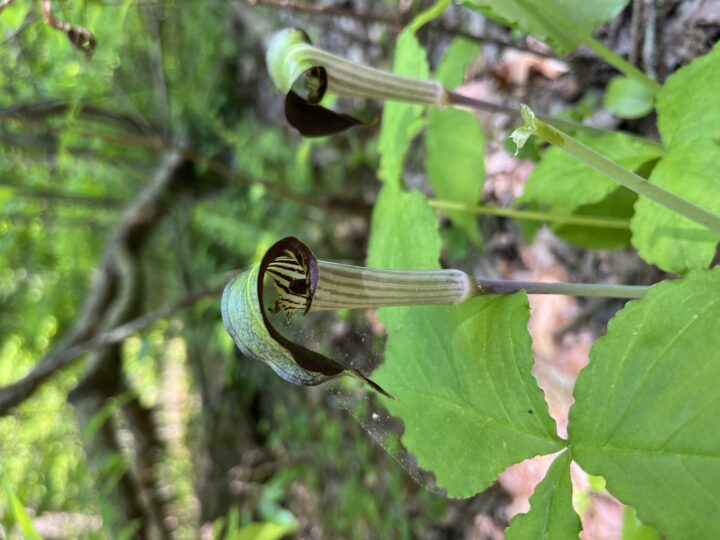
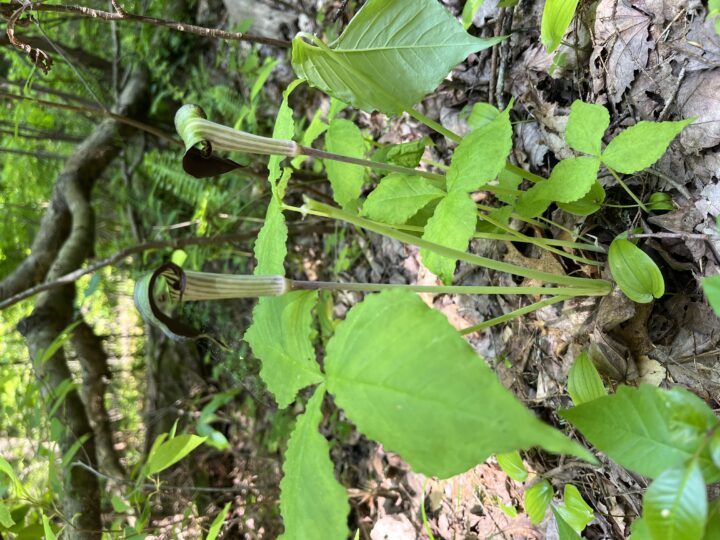
Another notable plant was a Hooked Crowfoot (Ranunculus recurvatus). The leaves are shaped in 3 egg-shaped segments. Hooked Crowfoot can also be found in damp woods.
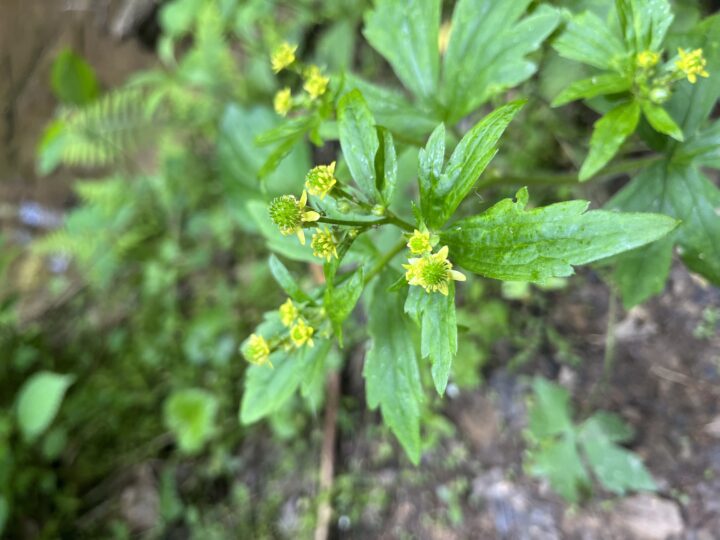
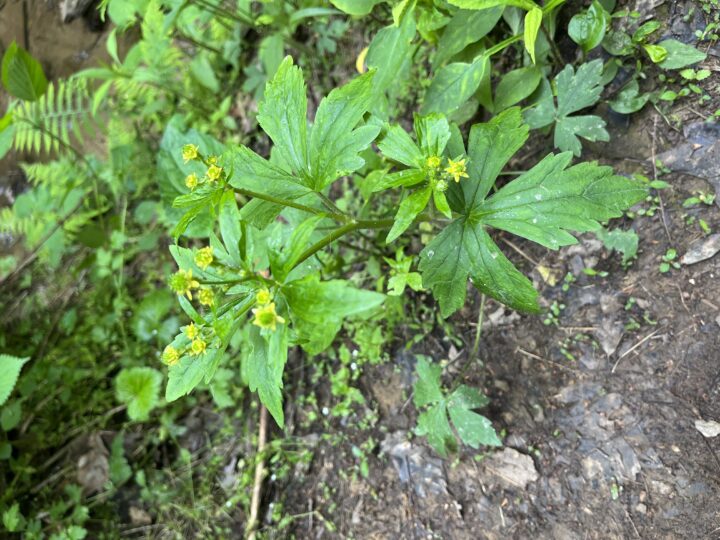
Another notable plant was False Solomon’s Seal (Maianthemum racemosum). I could not find this flower in Newcomb’s Wildflower Guide, so I had to do my own research out of curiosity! The leaves are alternate, entire, and are arranged on a zigzagging stem. The flowers are produced in panicles and are very fragrant! The fruits produced after the flowers are small, red berries. The roots and leaves were also used by Native Americans for medicinal purposes!
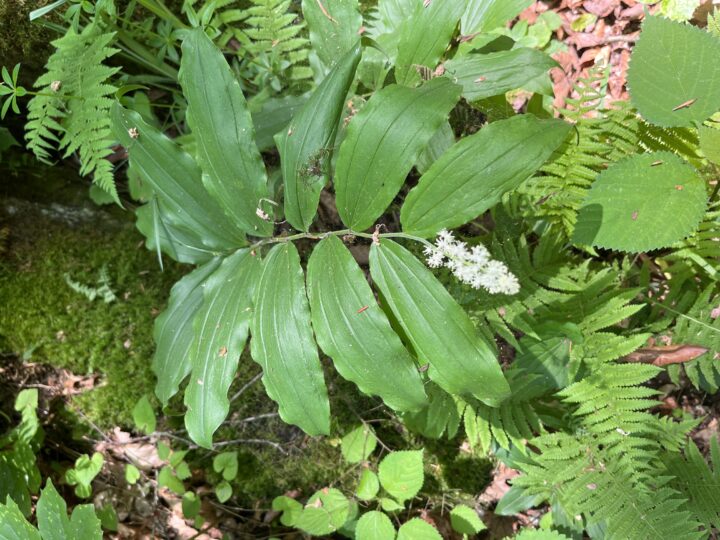
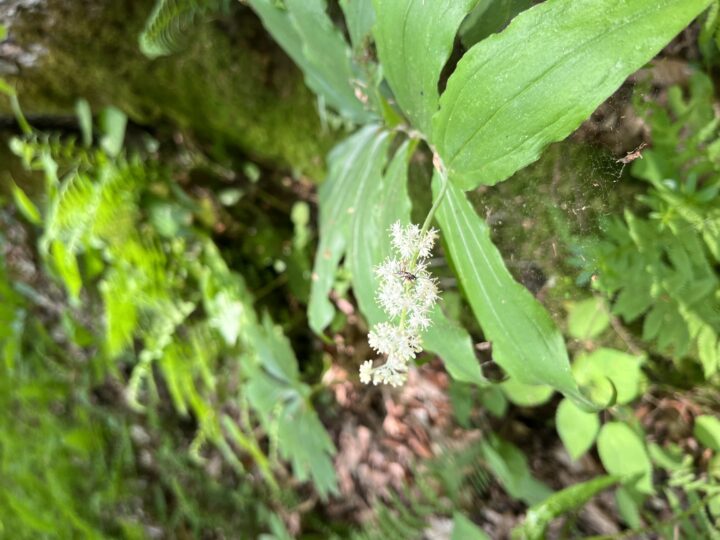
The Appalachian Gametophyte Answers:
- The common name for Vittaria appalachiana is Appalachian gametophyte. It is so remarkable because it is one of three ferns that the mature sporophytes have never been observed; it only exists as a gametophyte.
- Fern gemmae are much larger than spores, which means their dispersal looks different. Fern gemmae likely rely on short-distanced wind, water, or animal dispersal since they are too large to be carried long distances. Kimmer and Young provide evidence for dispersal by slugs.
- There is much evidence that supports V. applachiana‘s limited dispersal. The species does not exist north of the extent of the last glacial maximum, and other areas that otherwise would be suitable for the plant does not appear to be colonized by it. Appalachian gametophytes are only found in close proximity to one another. This illustrates that the current distribution must have occurred via spore dispersal from a fully functioning sporophyte.
- The current populations most likely cannot be sustained by long-distance dispersal from a tropical sporophyte source because dispersal from the tropics seemed to have only occurred once. The wide range of V. applachiana stems from the existence of a sporophyte during tropical temperatures before the ice age.
